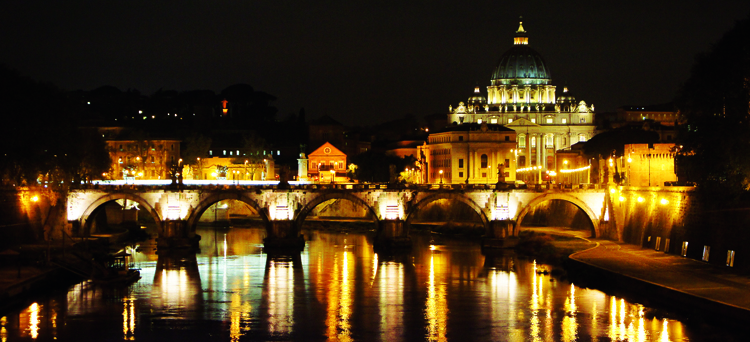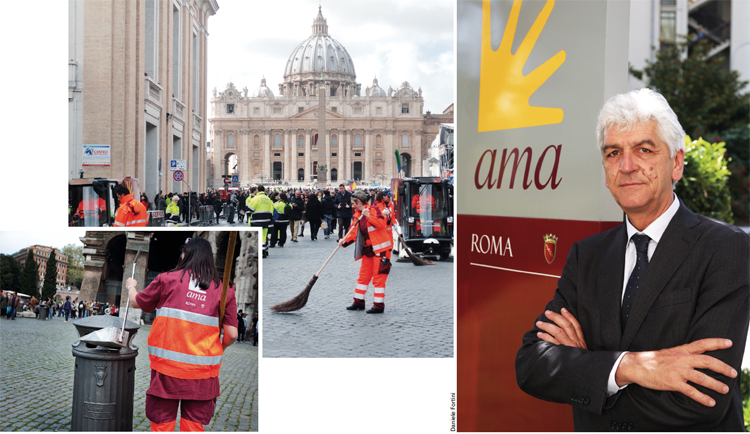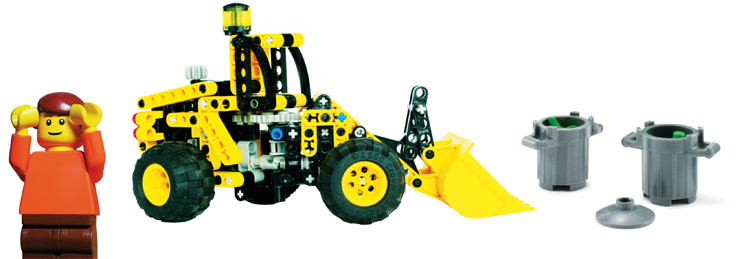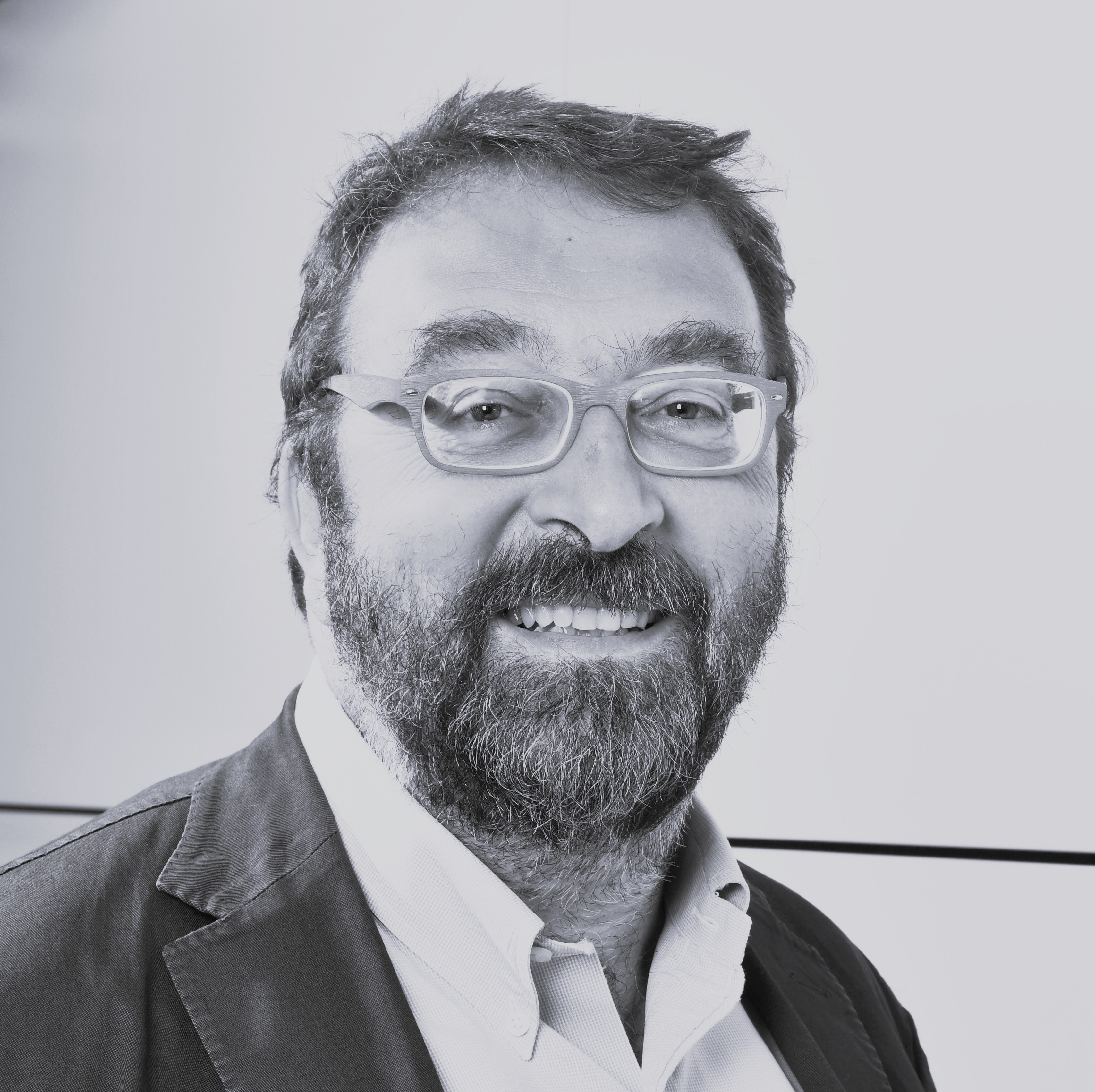
Talking about separate collection while strolling early in the morning along Trastevere lanes with Daniele Fortini (born in Orbetello in 1955), CEO of AMA (Azienda Municipale Ambiente, Municipal Environment Company) SPA for over a year and a half, is a curious experience. The previous night action has generated heaps of rubbish, above all little bottles scattered all over the place. Cast iron rubbish bins are overflowing, would it not be better to follow the example of other cities and provide large and practical clear bags?
“I wish! We tried,” Fortini says, “but the authorities would not have it.” What about retailers, do they behave? “Let’s not go there!” he says rolling his eyes. Street cleaners recognize the CEO and try to make an impression. But the daily papers highlight the abominations emerging from the Mafia Capitale inquiry: sometimes they talk about rubbish, sometimes about AMA, the company managed by the Municipality of Rome (7,800 workers) that does not shine for its efficiency and saving philosophy.
Daniele Fortini has always dealt with waste, in Tuscany, in Naples and as chairman of Federambiente. With Nadia Ramazzini (who worked for 10 years for A2A and currently works for Rubes Triva) he recently wrote an interesting book on this topic (La raccolta differenziata, Edizioni Ediesse). An entertaining and comprehensive book, suitable for non-insiders, containing some surprising statements. Separate collection is crucial but it is just an illusion (since it is uneconomic and physically impossible) because 100% waste recycling is unachievable. With enormous efforts, 60-70% of rubbish can be recovered and recycled – so in the future, we will still need a certain number of incinerators and landfills – but building an actual industrial sector on waste runs the risk of thwarting everything.
“We have been bombarded with the idea that separate collection is based on the virtuous behaviour of citizens, to be pursued by fair means or foul” Fortini explains, “but we have paid little or no attention to the industrial-financial-technological aspect behind separate collection. We forget that glassworks, paper factories and smelting works need ‘clean’ recyclable materials, free from contaminants, in order to easily process them in their plants without destroying their furnaces.” For example, a lot of glass to be recycled can be spoiled just by the presence of some crystal. “In short” the manager affirms, “convincing citizens to carry out high-standard separate collection is of little use if the downstream industrial system is not ready. And to get it ready requires investments.”
And this leads us to another burning issue. Who should pay for the good working of the recycling system? According to the law and the ANCI-CONAI agreements, the consortium receives from each packaging producer some kind of tax, “an environmental levy” or “CAC”. But basically, Fortini argues that not only do companies normally pass on the levy to end users, but indirectly they manage to keep part of it for themselves. “CONAI only gives municipalities – that physically collect rubbish and feed the recycling system – 35% of the levy value. The rest is kept by CONAI and by packaging companies. We, the rubbish dealers, would like this levy, worth €800 million and set by law, to be collected by an independent, third, public body created by the Ministry for the Environment.” This argument is fully rejected by CONAI and other companies operating in this sector that highlight the success stories of packaging recycling (it has exceeded the goal set by law) fearing the return to a system dominated by the public sector that did not show great efficiency in the past.

But going back to separate collection, what would the best method to promote both citizens’ collection and the appropriate processing of rubbish be? “Personally, I really like the model adopted by San Francisco, that of ‘separate waste fractions’” he replies. In the Californian city, there are only three bins: one for “dry waste” (paper, glass, plastic and metals), one for “wet waste” (organic waste) and one for “undifferentiated collection”. “Dry waste” is taken to a plant with the necessary equipment and technology to process it and divide it avoiding contamination. “Wet waste” ends up in composting plants. The recipe is to streamline separate collection in order to cut costs as much as possible” AMA CEO explains, “while investing in industrial equipment that can carry out what we cannot ask citizens to do”.
Very well, it is all clear. But in their book, Fortini and Ramazzini also explain another point: not all waste is recyclable. So the “zero waste” goal can only be a goal, something to aim at in an ideal world, but a utopia nonetheless. “We must be realistic” Fortini affirms, “even in small cities with very advanced recovery and separate collection programmes fully embraced by citizens, achieving 70% waste recycling is to be considered a great success. 30% of waste cannot be recycled.” Moreover, one thing is a small city – such as the famous Capannori by Rossano Ercolini, where there is a strong social control – and quite another a big metropolis like Rome. “Since the beginning of the year we have issued 5,000 fines for wrong waste management” AMA CEO says, “of which 3,500 for cars parked in front of rubbish containers that blocked night-shift dustcarts from emptying them. In Rome we empty 70,000 rubbish containers every day. Sometimes we are unable to empty 1% of the total: 700 rubbish containers are not emptied, mainly due to parked cars. They pose a serious problem for the city’s decorum, a problem that overshadows the fact that 69,700 have been emptied anyhow.”
“We are still faced with the problem that 30% of waste” Fortini asserts, “can’t be recycled. We are talking about bricks, stones, cigarette butts, alloy metals, nappies and all kinds of heterogeneous plastic, the so-called polylaminate packaging. There are 400 different plastic families, but in reality, only 3 can be recycled: PET (plastic bottles), HDPE (High-density polyethylene, plastic used for example for washing liquids) and some lighter polymers used for carrier bags. The rest is a problem: sometimes a simple child’s toy contains 30 different types of plastic, some are recyclable but they present high costs, limited uses, poor quality and durability and they can be barely sold on the market” (but to be fair, it must be said that there are examples, such as that of Revet, proving that these limits can be expanded and the recycling rates of this plastic mix increased, Author’s note). “A lot of energy is required to transform them, so the solution is to burn them recovering the energy they contain. Other things can only end up in a landfill.” More landfills? But what percentage of waste will end up in a landfill? “In Germany, less than 3% of waste ends up in a landfill. In Sweden even less and in Switzerland only 1%. Normally, 70% of waste can be recycled. 20-25% can be burnt obtaining energy and heat. What is left, including ashes produced by the incineration process, can go to landfills.”

We got there in the end: incinerators (or waste-to-energy facilities) and landfills. Unpopular and not very nice solutions. “Clearly, incinerators are not perfect machines, and as such they generate emissions and pollution” Fortini continues, “we know that much, we also know that citizens’ hostility is not due to paranoia but it has deeper roots. Unfortunately, Italy is a country that has experienced environmental degradation, where nasty things have happened. Lies and corruption of and opposition to those in charge of supervising. There have been several incidents, including Farmoplant, Seveso and Ilva in Taranto... citizens’ diffidence towards this sector’s behaviour is justified.”
In the past, the solution was simple because environment and health protection was not paramount. Huge landfills, even on riverbanks, burning waste generating enormous amounts of waste and fumes. But now, can incinerators be reintroduced? “Look, we have very advanced filtering systems, I wish cement factories and refineries had something similar. In fact, the pollutant particles emitted do not pose a significant risk to human or environmental health. Having said that, these machines are still necessary and sufficiently safe. Zero pollution would be better, but what they do at the moment is sustainable. In comparison, landfills pollute much more, starting from methane release, a powerful greenhouse gas.”
In theory, after 30 years a landfill becomes inert, this means that it can be planted with trees and gardens, but leachate caused by rainwater still needs to be collected. So, incinerators are preferable to landfills. In Italy, there are 53 of them, rather old and with limited capacity, while Germany boasts 100 of them, even more powerful. Fortini suggests renewing Italy’s “fleet”, closing down the older small ones. An idea not popular with everyone but a solution that the Capital’s biggest waste management utility intends to adopt in order to get Rome out of this emergency.


